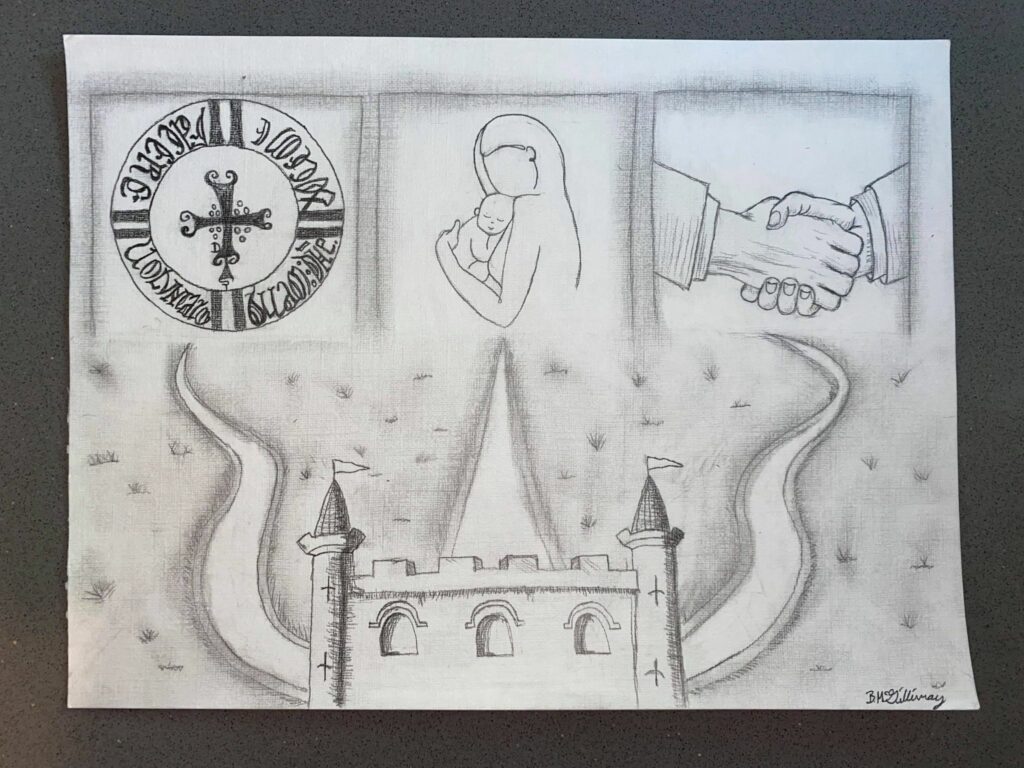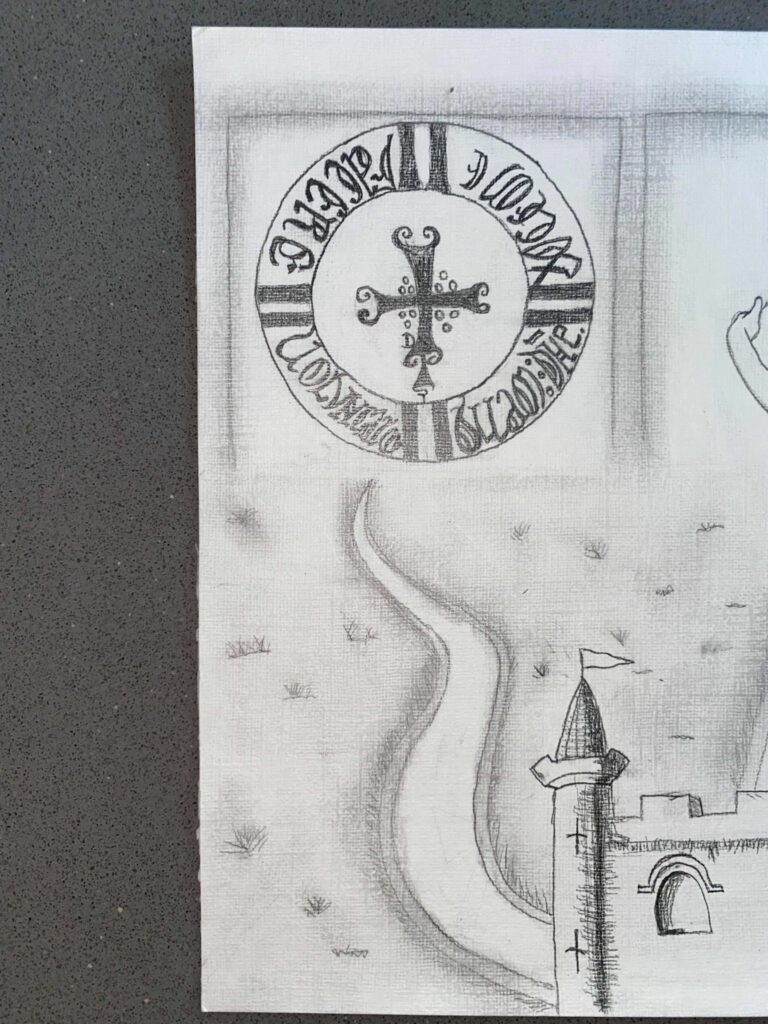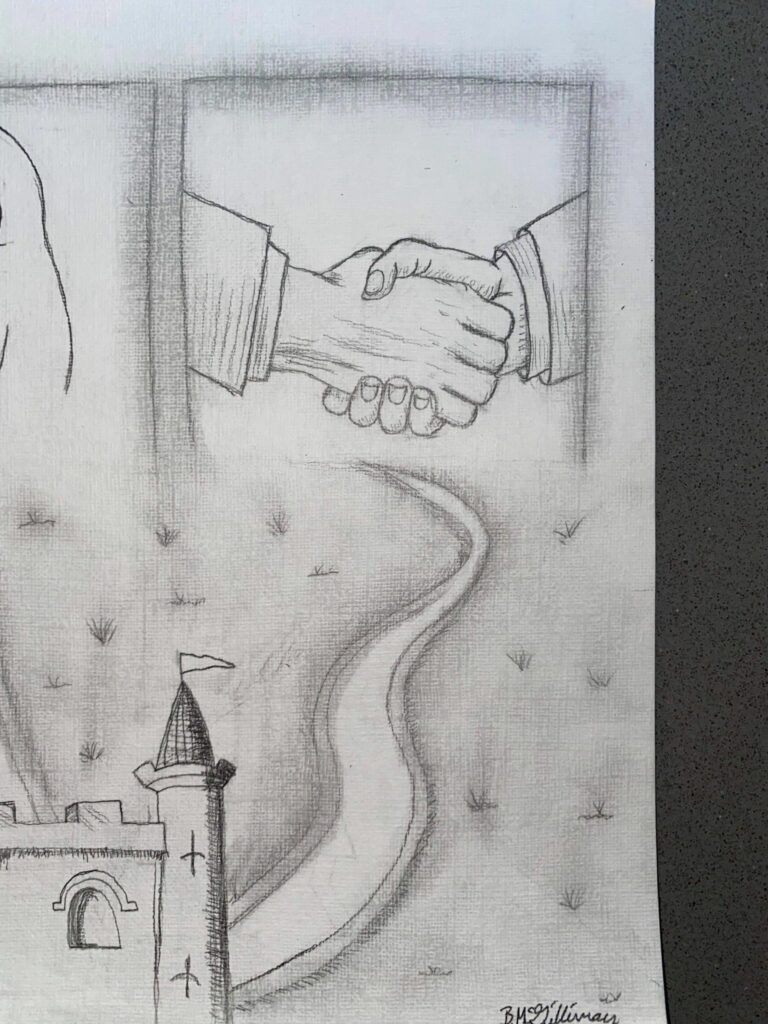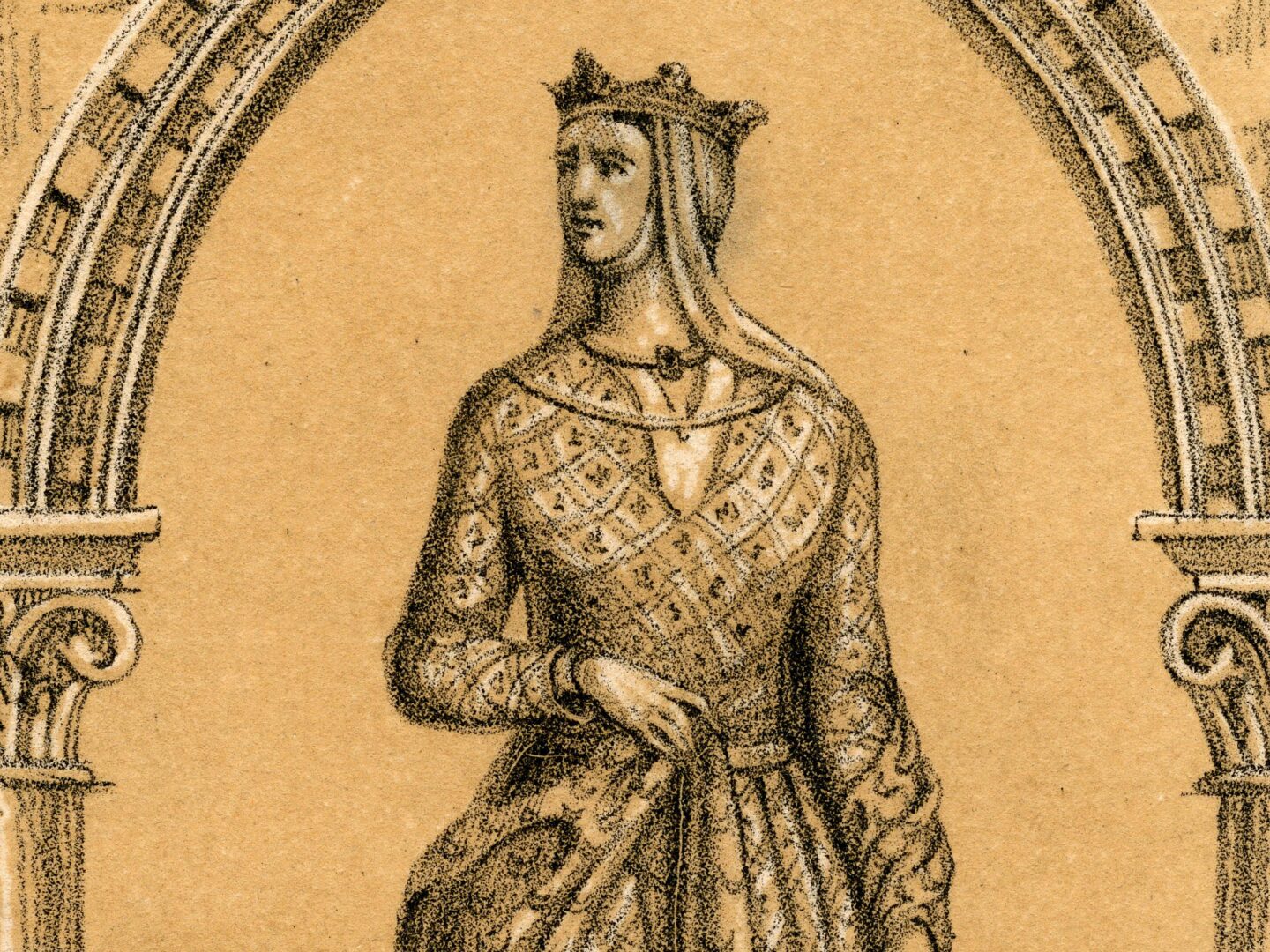Queen Berenguela: The Road of Successful Queenship
Baylee McGillivray
June 21st, 2021
History 365: Final Project
University of Northern British Columbia
I chose to do my artistic representation on Queen Berenguela (1180-1246) of Castile, and how she made a major impact in Castile and León during her lifetime. The specific medium that I chose is a drawing and I chose this because out of all the artistic choices that we could choose from this was the one that most interested me and I felt that it would definitely be a challenge. When originally looking at this project I was going to split it into colour and black and white depending on the negative and positives of her reign but when reading my sources, I decided to do it all in black and white and to just focus on how she was successful as a queen, and that can be seen through religion, motherhood and politics. Therefore, the drawing will have three important parts of her ruling being religion, motherhood, and politics which each part leads into a road that leads to her Castile to show Berenguela as queen of Castile and León.
Berenguela “became a regent not through motherhood but because she was the heir to the throne, and the king’s oldest sister”[1] when her father Alfonso died. The question of what did Queen Berenguela’s life look like as a queen of Castile and how did she make a difference as queen can be answered through religion, motherhood and politics. After reading all of the sources that I chose on Berenguela I decided that I wanted to focus on the topics that made her successful as a woman in power and not focus on if there were any negative aspects. I chose Queen Berenguela as my topic because “she typified the medieval elite women shoe ordained role of life was to be a wife and mother”[2] and was still a successful woman in power even when she gave the throne over to her son she was still very involved with what happened in the kingdom of Castile and León. Looking at successful women in power in history has always been of interest to me as when I was growing up I never learned about many women in power and it was always focused on men. Women tend to rule different in many aspects and it was interesting to learn about how much power Queen Berenguela had after her father Alfonso died and certainly helped that there was no objection to her reign as she had the right to the kingdom being the eldest daughter. “Thus, Berenguela’s early patronage not only fulfilled her appropriate duties but also asserted her rights to grant and confirm privileges, patronize the church, and eventually restore cities and promulgate law codes-to act as queen.”[3]
Queen Berenguela was very much a Christian and Christianity was very important to her and that could be seen through “her generosity to the Order of Santiago shows [her] to be wealthy, in control of royal resources, pious and politically attuned to the religious-military brokers of power in Leon.”[4] She donated much of her own money to the churches and had great relationship with archbishops and bishops which showed them her loyalty and made her reign of Castile easier than having them be against her reigning as a woman. Because Christianity was so important to her and that “the donation charter recorded in the Tumbo de Sobrado is decorated with Berenguela’s signo rodado,”[5] I decided to include her symbol that represented her as a queen and a religious figure. “Berenguela’s symbol copied that of her father: a circle enclosing a cross”[6] and “Berenguela’s reference to Psalm 142 might indicate that she equated her authority with that of the old testament kings- a common medieval royal impulse-and wished to suggest that her actions reflected the will of god.”[7] Being involved with the church helped her gain power, create ties with people from other places and showed her loyalty to the church by utilizing her son’s power of going to war against Muslims to promote him as a leader and keeping his faith to Christianity.
Motherhood was very important to Queen Berenguela and “Berenguela’s relationship to Fernando, which was biological and political, was key to the security of royal power in Castile and enabled the unification and expansion of the kingdoms of Castile and Leon.”[8] Therefore, for my drawing I showed a mother hugging her son. She could have kept ruling herself but decided against it and made her son Fernando king. It was clear to see that “her intention was, as truly appeared afterward, to give her father’s kingdom to her oldest born son, lord Fernando; since no other masculine child of king Alfonso was still alive, it [the kingdom] belonged to the queen herself by reason of the fact that she was older than her other sisters.”[9] Although Queen Berenguela gave the throne to her son she was still very involved and helped him make important decisions and ruled in place of him if he was elsewhere at the time.
As Queen Berenguela was the leader of Castile and León she had to deal with the politics of the kingdom such as making sure that the treaties that were started with her father Alfonso would be kept when she was ruling. By treaties and having political alliances I decided to show that by having two hands shaking to signify the importance of having political alliances. By having good ties with the archbishops and bishops and the Christian church it payed off by having them on her side when making important decisions such as going to war. Like Alfonso king of León in 1188 “I have also promised that I will not make war or peace or alliances without the counsel of the bishops, nobles and men of good standing through those counsel I should rule.”[10]Although she was not the leader of Castile and her son was she still made decisions and “there, together with his noble mother and the archbishops of Toledo and the bishop of Burgos and all the magnates of the realm, after discussion, the decision to make war against the Saracens was confirmed.”[11] Politics also has to do with marriage, marriages between kings and queen in most cases happens to combine kingdoms together to expand territory. Queen Berenguela made political decisions that involved who she allowed her son Fernando to marry because it would allow for her to expand her territory and have new allies from different kingdoms. She wanted Fernando to marry someone from the German empire, “thus, Berenguela likely hoped the marriage would strengthen the Castilian connection with the German empire as well as provide heirs to perpetuate her royal lineage.”[12]
The primary and secondary sources really influenced how I decided to go about my drawing representation of Queen Berenguela. I could have chosen to compare how she reigned on her own to how she helped her son reign but from reading how much influence she had as a woman in power I really wanted to focus on that. I found the source from Shadis Miriam to be very interesting as it was a whole source just focusing on Berenguela and all the aspects of the topics I really wanted to look at being religion, motherhood and politics. Overall, I do wish I would have found more secondary sources but I really enjoy reading all the sources that I found.
Bibliography
In Medieval Iberia: Readings from Christian, Muslim and Jewish Sources. Ed Olivia Remie Constable. Toward A New Order of Power: A. Statutes of León (1188). Translated from Latin by Simon Doubleday.
O’Callaghan, Joseph. 2002. The Latin Chronicle of the Kings of Castile. Arizona Centre for Medieval and renaissance Studies.
Shadis, Miriam. 2009. Berenguela of Castile (1180-1246) and Political Women in the High Middle Ages. 1st ed. New York: Palgrave Macmillan.
[1] Miriam Shadis. 2009. Berenguela of Castile (1180-1246) and Political Women in the High Middle Ages. 1st ed. New York: Palgrave Macmillan: 73.
[2] Miriam Shadis. 2009. Berenguela of Castile (1180-1246) and Political Women in the High Middle Ages. 1st ed. New York: Palgrave Macmillan: 1.
[3] Miriam Shadis. 2009. Berenguela of Castile (1180-1246) and Political Women in the High Middle Ages. 1st ed. New York: Palgrave Macmillan: 76.
[4] Miriam Shadis. 2009. Berenguela of Castile (1180-1246) and Political Women in the High Middle Ages. 1st ed. New York: Palgrave Macmillan: 74.
[5] Miriam Shadis. 2009. Berenguela of Castile (1180-1246) and Political Women in the High Middle Ages. 1st ed. New York: Palgrave Macmillan: 91.
[6] Miriam Shadis. 2009. Berenguela of Castile (1180-1246) and Political Women in the High Middle Ages. 1st ed. New York: Palgrave Macmillan: 91.
[7] Miriam Shadis. 2009. Berenguela of Castile (1180-1246) and Political Women in the High Middle Ages. 1st ed. New York: Palgrave Macmillan: 91.
[8] Miriam Shadis. 2009. Berenguela of Castile (1180-1246) and Political Women in the High Middle Ages. 1st ed. New York: Palgrave Macmillan: 3.
[9]O’Callaghan, Joseph. 2002. The Latin Chronicle of the Kings of Castile. Arizona Centre for Medieval and renaissance Studies: 74.
[10] In Medieval Iberia: Readings from Christian, Muslim and Jewish Sources. Ed Olivia Remie Constable. Toward A New Order of Power: A. Statutes of León (1188). Translated from Latin by Simon Doubleday: 212.
[11] O’Callaghan, Joseph. 2002. The Latin Chronicle of the Kings of Castile. Arizona Centre for Medieval and renaissance Studies: 90.
[12] O’Callaghan, Joseph. 2002. The Latin Chronicle of the Kings of Castile. Arizona Centre for Medieval and renaissance Studies: 106.





Recent Comments